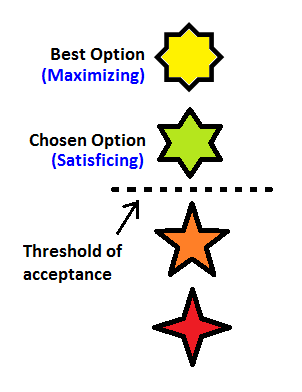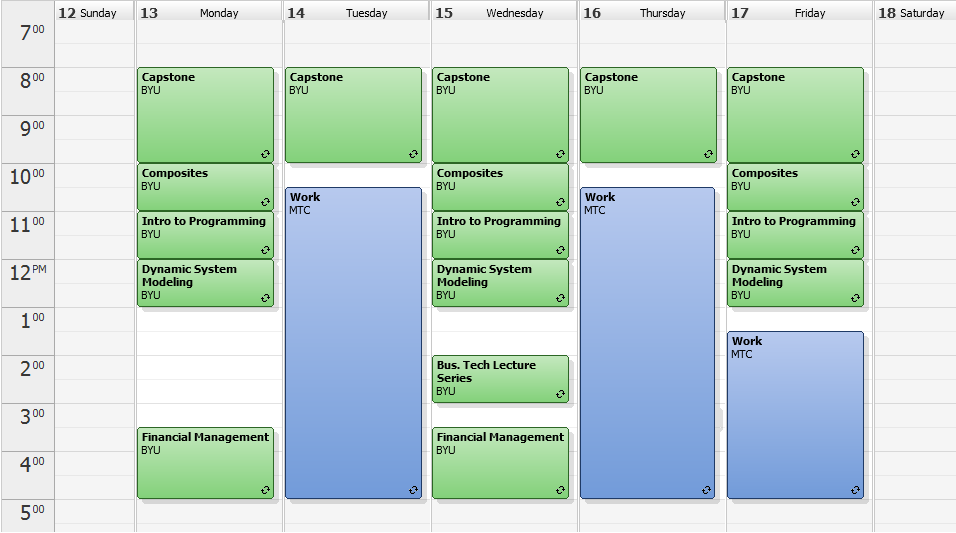Consider ALL the Options
It’s finals week for me. That means that I’m back in the all-too-familiar position between that rock and that hard place I’ve come to know quite well. I’ve got limited time and resources to prepare for some quickly approaching and unforgiving final exams. Naturally, the preparation process is going to include some decisions and some trade-offs. Which class can I afford to study the least for? Is it better to forfeit an hour of reading or an hour of sleep? How appropriate it is, then, that my Organizational Behavior book (which I have to study anyway) happens to describe the decision-making process and ways that we can end up making better decisions. Here’s how the process works (using my sweet Mario Bros. analogy):

- Identify a goal - Mario wants the Question Block
- Recognize the problem - Koopa Troopa can harm Mario and prevent him from getting the Question Block
- Develop alternatives - Jump over the Koopa Troopa, step on the Koopa Troopa, etc.
- Choose an alternative - I will step on the Koopa Troopa
- Implement the decision - goes and attempts to step on Koopa Troopa
- Evaluate the Outcome - I miscalculated my jump, got hit by the Koopa Troopa, died, and lost a life. Maybe next time I should try a different approach.
Of course, in reality these steps happen quickly and automatically. Our world tends to dictate that we rush these decisions (If Mario doesn’t act in the next 1.5 seconds, it’s all over). One of the consequences is that we often end up satisficing (yes, that is a word) instead of maximizing.
Satisficing vs Maximizing
To understand satisficing and maximizing, we have to look at steps three and four of the decision-making process. These steps involve developing options and selecting one. Within our range of options is an imaginary line that separates the acceptable ones from the unacceptable ones. We call this the “threshold of acceptance.”

Our human nature leads us to only develop alternatives until we find one that is above this threshold. As we select the first option we find above this threshold, we are satisficing. Where satisficing is going with the first acceptable option, maximizing is going with the best possible option—meaning, you develop all the possible options before selecting the best one. If Mario were maximizing in the example above, he’d also consider options like “turn around and run the other way,” “just stand there and see what happens,” “go up and over the bricks above,” “pause the game to get more time to decide,” and maybe several others. Maximizing leads to superior outcomes. Maximizing works because sometimes the best options are not the most obvious ones. We shouldn’t rule out missing meals, walking instead of driving, or asking for exceptions, even though these options aren’t usually considered. Maximizing allows you to move forward with confidence, knowing that you considered every option. In life, we often satisfice when we ought to maximize. Of course, maximizing comes with a trade-off. It takes time and effort to evaluate all the options. Like Mario, we may only have a few seconds to decide. If there are a lot of options, we may need to write them down so we can remember them all. But for important decisions, the time spent maximizing is worth it.
Application
This week I realized that my schedule next semester was going to be too much for me to handle. I’ve got a legitimate problem on my hands.

This is just like the Mario situation, except the Question block is graduation, and the Koopa Troopa is homework. Let’s maximize. Here are my options:
- Just commit to this schedule anyway.
- Try this schedule until things get really bad… then make a change.
- Drop a class or two.
- Reduce my sleep.
- Reduce my hours at work.
- Quit school.
- Quit sleeping.
- Quit my job (this brings in options like getting student loans, having Holly work, or reducing expenses)
- Try and do homework on the clock without getting caught
- Get a new job that allows me to do homework on the clock (security guard?)
- Move closer to campus (to reduce travel time)
- Hire some tutors for some of these classes.
- Postpone graduation.
- Study time management practices over the Christmas break.
- Study speed reading over the Christmas break.
- Buy this.
- Ask other people for advice.
- Eliminate extracurricular activities (like Web Start-up Group, dates, family time, Temple trips, church, events, blogging, showering, Facebook, and/or others)
- Buy a motorcycle (which probably won’t improve the circumstances but it could make me feel more awesome and confident that I can actually do it)
- Audit one or more of these classes.
Ok that’s enough for now. As you can see, several of these are awful ideas. But now I am in a position where I can be confident that my choice (or choices) will result in the best possible outcome.